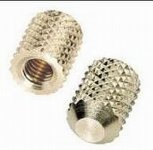You are using an out of date browser. It may not display this or other websites correctly.
You should upgrade or use an alternative browser.
You should upgrade or use an alternative browser.
Forward Hatch Leak
- Thread starter irlboater
- Start date
As Marc noted Bomar does have the gasket material. Be double check to be sure that it is the gasket. A 2000 C Dory should not have the gasket gone yet. I have owned much older boats than that with intact seals. Many of the hatches are not bedded properly. Leakage can occure around the flange. You may even have to put in a little extra glass and resin, if the cut out was too large.
Use a hose and look and see exactly where the liquid comes in.
The Bomar gasket material may not be a "ring", but be liniar as some replcement gaskets are, and glued in palce, with the two ends glued to make the circle of the gasket.
Use a hose and look and see exactly where the liquid comes in.
The Bomar gasket material may not be a "ring", but be liniar as some replcement gaskets are, and glued in palce, with the two ends glued to make the circle of the gasket.
The 22 I just bought is a 1988. It too had a leak, so I took the cover off to have the "cracked" plexi replaced. When I got it back it still leaked, so I took the flange off, and low-and-behold the seal where it was bedded was leaking, and allowed the balsa to get wet and "rot". Had to dig it out and replace the removed balsa with duraglass. Therefore, the balsa sandwich area is now totally sealed and impervious to water...but, guess what, the newly replexied cover was leaking between the rubber gasket, the plexi, and the frame. I will be removing the plexi and replacing the silicone that was used with rain-gutter sealant that is an improved silicone-type sealant. It hardens slightly more, and does so much faster. I'll make sure it has plenty so I don't see water on the inside between the plexi and the gasket. Anyway, don't let it be -- fix it, or you'll have more to deal with than a wet bunk. Ron
Many of the hatches are not bedded properly. Leakage can occure around the flange.
I went through this a while back. One day during a rainstorm a fast leak appeared and soaked my sleeping bag. Upon close examination a tiny hole was visible in the Sikaflex (5200 variant) at the frame/deck junction(in a corner). I think the hatch mounting screws were the problem.
Once home I removed the hatch assembly to inspect and reseal. Releasing it was tricky. I started with razor blades (they quickly broke) and moved on to my filet knife. I finally tried something that worked real well... spectra fishing line. I had some high-test in my tackle box that I use for bottom fish. A couple of feet of length. Wrap the ends around some sticks or screwdrivers to use as handles. Cuts through 5200 like a cheese knife. Won't scratch the gelcoat!
Once removed I found little moisture. The water had simply followed the screw threads and found that tiny hole. I'm actually glad it did. That way it didn't have a chance to soak my balsa before I discovered it. This is yet ANOTHER example where screws threading into balsa is risky. Just like the fuel tank brackets.
As to screw-holes, Dr. Bob (Thataway) posted some nice shots of a technique to under-cut the skin and then fill the void with thickened epoxy. I think they're in his album somewhere. A good system I follow. On a couple of projects I've employed threaded-inserts as well.

In this case I opted to simply fill the holes with thickened epoxy and discard the screws. They aren't needed what with the adhesive/sealant that's applied to that huge flange. I then sealed the exposed balsa with a nice layer of "peanut Butter" epoxy smoothed with popsicle sticks or rubber spatula blades(can't remember which). Once cured I reinstalled with 4200.
It hasn't leaked in close to 15 years now. In fact, I'd almost forgotten about it until this thread.
smittypaddler
New member
The hatch on my 2004 c-22 Cruiser leaked on me a few years ago, and it turned out to be simply a loose screw on the hinge. One twist with a screwdrive fixed the problem.
There are very specific silicone sealants used for bedding plexiglas or lexan (which many of the hatch covers are). I had replaced all of the windows of my cal 46 with 5/16" lexan and a structural sealant--it turned out to be the wrong one for salt water. I ended up consulting with a person who put in Lexan windows for Megayachts. I don't remember the exact number of the sealant, but DOW has 141 silicone sealant adhesives and GE has about an equal number. You want a marine sealant for plastics. You also want to space the plexiglass or Lexan slightly off the frame. I used 1/8" rubber cork gasket spacers, and floated the window or hatch material in silicone--not allowing the plastic to touch the fiberglass hull or aluminum hatch frame.
